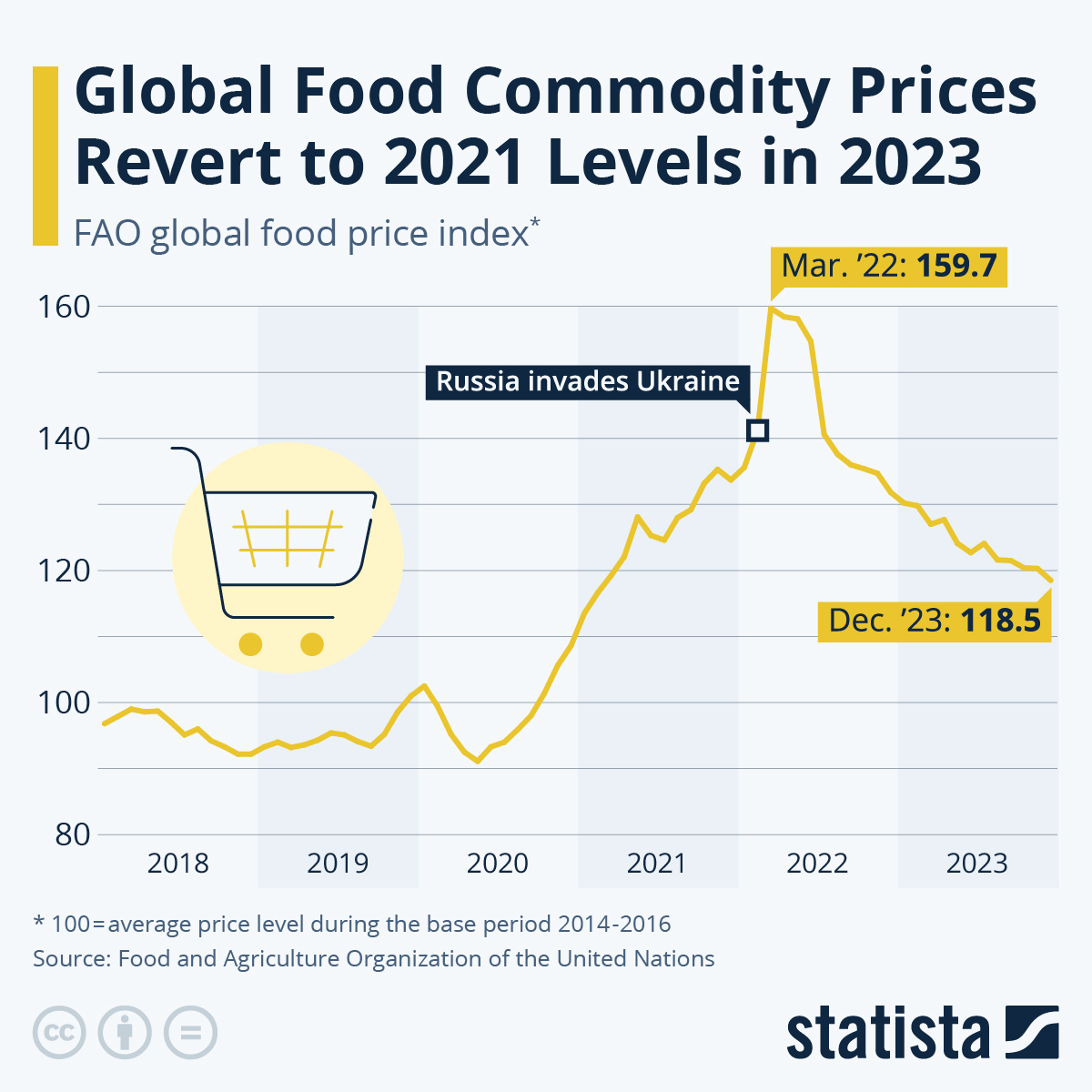The Food and Agriculture Organization (FAO) reported a marginal increase in global food prices for the month of March, snapping a seven-month streak of decline. The FAO Food Price Index rose by 1.1% to 118.3 points in March compared to February, driven primarily by a surge in vegetable oil prices.
The rise in vegetable oil prices was significant, with the FAO Vegetable Oil Price Index jumping 8% in March. This increase was attributed to a confluence of factors, including seasonally lower yields in major palm oil producing countries and strong domestic demand in Southeast Asia. Additionally, soy oil prices rebounded from multi-year lows due to increased demand for biofuel production in the United States and Brazil.
While vegetable oil prices rose, cereal prices continued their downward trend. The FAO Cereal Price Index dipped 2.6% in March, marking a 20% decrease from March 2023. This decline was largely driven by falling global wheat export prices due to intense competition among major exporters like the European Union, Russia, and the United States. Favorable harvest prospects in several key wheat-producing regions also contributed to the lower prices.
The FAO Dairy Price Index and the FAO Meat Price Index also showed upward movement in March. The Dairy Price Index climbed 2.9% due to rising international cheese and butter prices, while the Meat Price Index increased 1.7% with higher prices for poultry, pig, and bovine meats.
Experts believe the uptick in March might be a temporary blip. The overall FAO Food Price Index remains 7.7% lower compared to its value a year ago, indicating a sustained downward trend in global food prices. The FAO attributed this trend to improvements in global food supply conditions and receding concerns about the impact of the Ukraine war on food production.
However, ongoing geopolitical tensions and extreme weather events continue to pose potential risks to global food security. The FAO emphasized the need for continued vigilance and policies to ensure food supply stability and affordability for vulnerable populations.

